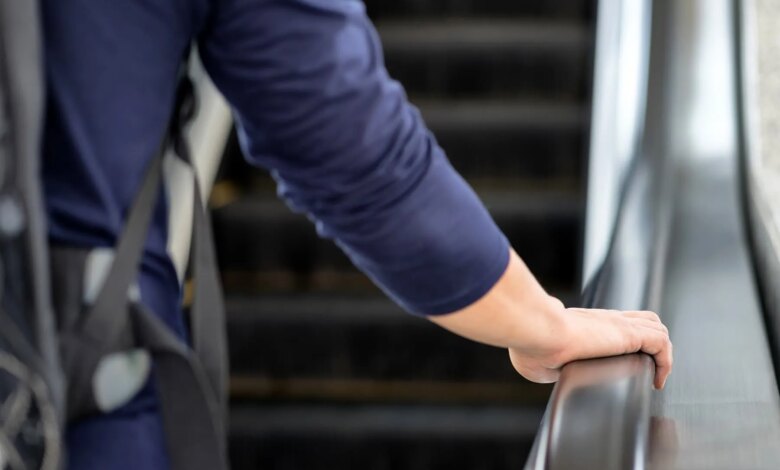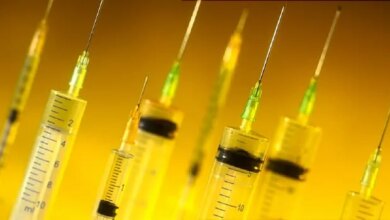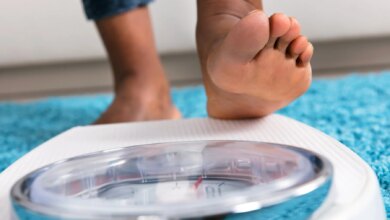Germiest Public Places

Germs are all around us. You might be surprised – if not grossed out – at the places and things that are the germiest, though. Still, there’s a practical way to deal with these microbe multipliers: Ask yourself what a germ would do.
“You have to think like a germ,” says Patricia Stinchfield, RN, MS, CPNP, a pediatric nurse practitioner in St. Paul, MN. She specializes in vaccines and infection prevention and control and serves as president of the National Foundation for Infectious Diseases. “How does a germ like to spread? Then you have to make a barrier between it and you.”
For example, germs are airborne, so consider the air you’ll be exposed to, she says. From this point of view, check for ventilation and seek spots that offer fresh outdoor air.
Here’s how to take on some of the germiest places and things in your community.
Your workplace. Company appliances in your office or breakroom, with their warm, dark germ-friendly nooks, never go home. Standing water in the reservoirs of coffee- and ice-makers breed bacteria growth and viral film.
Your own workstation might not be much healthier; studies revealed desktops harbor more bacteria than a toilet. They’re also not cleaned nearly as often.
What to do:
- Wipe your desk often with disinfectant spray and a paper towel, especially if you eat there.
- Make sure machines are on regular cleaning detail. Stinchfield suggests having an auto-cleaning system for ice-makers at work.
- Other oft-touched technology like computer keyboards – especially when shared – are germ hot spots, too. “At a hospital, and in the ER, you learn to wipe that keyboard off really quickly,” Stinchfield says.
Elevators and escalators. Being wary when riding public transportation might have become more second-nature because of the pandemic. That’s a good thing, because you have airborne germs and filthy surfaces to combat. But germs love the rides that take you up and down, too.
While you might know those elevator buttons will take you straight to germ city, kids are eager button-pressers who often can’t help themselves. “What harms them is they then put [their finger] in their mouth or their eye,” Stinchfield says. Ditto for the handrails you use on the way up or down an escalator.
What to do:
- Stinchfield tells kids when they go to public places, “Pretend you have this magic shield over your face that you can’t touch. … What opens the magic shield is you wash your hands first.” This is great advice for anyone.
Shopping carts and baskets. Even when we’re sick, we often find ourselves running to the store for “just for a couple of things.” The average cart or basket is used many times a day, collecting bacteria that can include E. coli and salmonella that can live on them for 2 to 8 hours. It’s worth taking a few extra seconds to grab a disinfecting wipe and rub down the handles and child seat before you pick up that milk and bread. And wash your hands when you get home before you put your groceries away.
Restaurant trays. In a study by the NSF, the public health and safety organization, these plastic portables ranked among the highest bacteria-containing items in public spaces. They were second only to kids’ public park sandboxes – gag-worthy at 7,440 aerobic bacteria, yeast, and mold per gram – and on par with school music instruments and movie theater video game controllers.
What to do:
- Some eateries wipe down every tray after every use. You don’t always know which ones practice this, though. One solution is to say “no” to the tray and order to go (it doesn’t mean you can’t grab a table afterwards). Once seated, you can set your food items on the folded paper bag they come in or napkins.
ATMs. In your hurry to get your cash from the automatic teller machine and go on your way, you might forget how many people have just done the same thing. Some studies have shown there’s as much germy stuff on those buttons as on handles in public bathrooms.
What to do:
- Wash your hands or use hand sanitizer right after using the ATM.
Public water fountains. Whether at school, in the mall, airport, or elsewhere, water fountains stand ready to infect.
What to do:
- Stinchfield’s advice to kids applies to everyone: “Don’t put your mouth on the spigot. Let the water come to you.”
- Many public places like airports have installed contact-free bottle filling stations with purified water. Schools and other high-traffic places have begun to follow suit.
Your cellphone. It goes with you everywhere, right? Think about it. “You really have to have a personal cleaning plan” for your phone, Stinchfield says.
What to do:
- Make a habit of wiping it down with a disinfectant cloth at least once a day. Or you can sanitize it in a little phone-sized UV light box.
Hand-Washing Reset
One thing the pandemic did for us was remind us how key washing your hands is. But over time, and perhaps because we get tired of hearing it, it’s easy to forget. A refresher:
- Wash your hands for 20 seconds with soap and water, then rinse well. Warm or cold, your choice.
- An alcohol-based hand sanitizer that is at least 60% alcohol is a good backup in a pinch. It doesn’t do as good a job as soap if your hands are extra-dirty, though. Sanitizer also won’t clean chemicals from your hands.
- Dry off with a clean towel or let your hands air dry.
Face Masks Will Always Be ‘In’
“A mask is a barrier,” Stinchfield says. Not only does it keep you from breathing in airborne germs, it also reminds you not to put your hand to your mouth. In this way, it keeps out nasty things like a diarrhea virus that can easily move from your hand to your mouth. An N95 or surgical mask screens out germs best, Stinchfield says.
Also, be careful taking off your mask. It’ll be contaminated on the outside after use. Grab your mask by the ear loops and unhook them from your ears at the same time. Remove the mask while holding it away from you and drop it in the trash.
Source link




